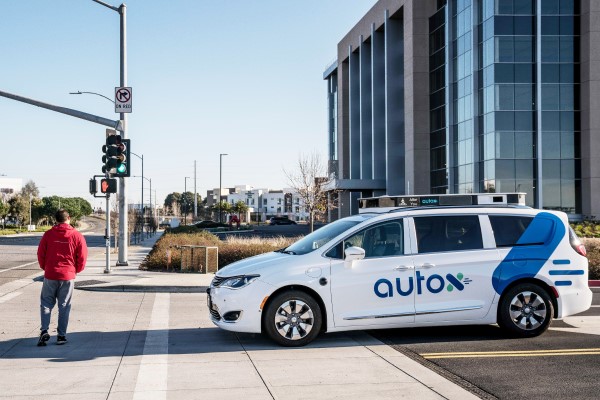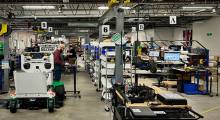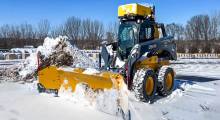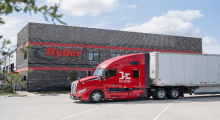In December 2020, AutoX Inc. launched its fully driverless robotic taxicab service, making it the second company in the world (after Baidu's Apollo Go) to do so without a safety driver in the vehicle.
“The first 100 days have been a huge step forward for us and for the entire industry in China,” stated Prof. Jianxiong Xiao, founder and CEO of AutoX. “We have learned so much from the feedback from our passengers about how to continuously improve our service to make the driverless journeys a fantastic experience.”
Dr. Xiao has more than 10 years of research and engineering experience in computer vision, autonomous driving, and robotics. He has degrees from the Hong Kong University of Science and Technology and the Computer Science and Artificial Intelligence Laboratory at the Massachusetts Institute of Technology (MIT CSAIL).
In addition, Xiao was an assistant professor at Princeton University and the founding director of the Princeton Computer Vision and Robotics Labs from 2013 to 2016.
Shenzhen pioneers RoboTaxi testing in China
AutoX's fully driverless RoboTaxi service has been “well received” by Shenzhen residents and officials alike, according to Ms. Wang, a representative of the company's operations team. Within the first 100 days of operation, AutoX RoboTaxi has won loyal users from the traditional ride-hailing market, she said.
AutoX is the second permit holder for California Department of Motor Vehicle’s completely driverless robotaxi permit (after Cruise). In China, the Shenzhen-based company has deployed more than 100 RoboTaxis in Shanghai, Shenzhen, Wuhan, and other cities.
Shenzhen is the first and only city in China where fully driverless cars can operate on public roads. Beijing, by contrast, only allows autonomous driverless vehicles to operate with a “backseat safety driver” present in the second row or passenger seat, and vehicles may only drive within closed campuses or zones.
Similarly, Guangzhou also requires a “backseat safety driver” in vehicles with remote control, and they are only permitted to drive at low speeds.
“Our interactions with AutoX operations have been very positive,” said a Shenzhen official. “And this service also provides a great example for us to further polish the legislative framework for fully self-driving cars.”
The city's government announced recently that it will pass legislation permitting SAE Level 4 self-driving cars on its streets, making Shenzhen the first city in China to do so.
To mark this news, AutoX also released a two-hour video of its fully driverless RoboTaxi continuously driving (see below). The video shows how AutoX’s vehicles can drive near other vehicles and cyclists moving in the opposite direction, nudge around illegally parked vehicles and oversized trucks, and handle aggressive cut-ins by other vehicles.
The video also demonstrates the RoboTaxi changing lanes and even driving on the opposite lane to bypass other vehicles and avoid motorcyclists violating traffic rules.
In the two hours of consecutive driving, the car takes 16 ride orders and passes through many Shenzhen landmarks, including the headquarters of BYD, the research center of Evergrande Group, parks, schools, hospitals, construction sites, residential, and industrial areas.
The video also showcases the fact that AutoX’s vehicles are fully driverless, unlike its competitors in China, which still have “backseat safety drivers.”
AutoX said it will continue to improve and expand its product offering by introducing new features and capabilities. In particular, the company plans to upgrade its fleet's sensor hardware to the latest version – the AutoX Gen 5 setup – which will include six high-resolution lidars and eight high-resolution 4D imaging radars.
Corporate partners of AutoX include Alibaba Amap, Fiat Chrysler Automobiles, Honda, Dongfeng Motors, Shanghai Auto, BYD, Chery Automobile, Pengcheng Taxi, LetzGo Taxi, and DST. Top investors and strategic partners include Capital Today, Alibaba AEF, Dongfeng Motor, Shanghai Motors, MediaTek, and more.
About the Author
Follow Robotics 24/7 on Linkedin
Article topics
Email Sign Up
















